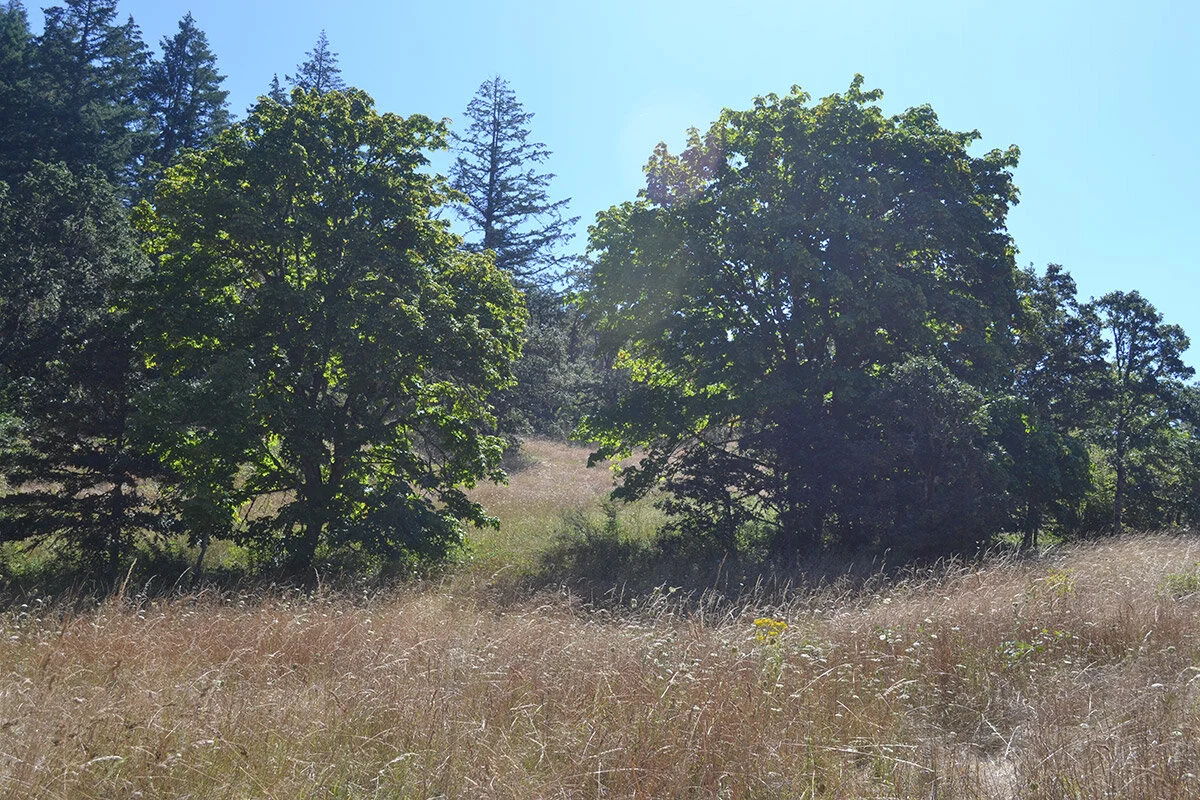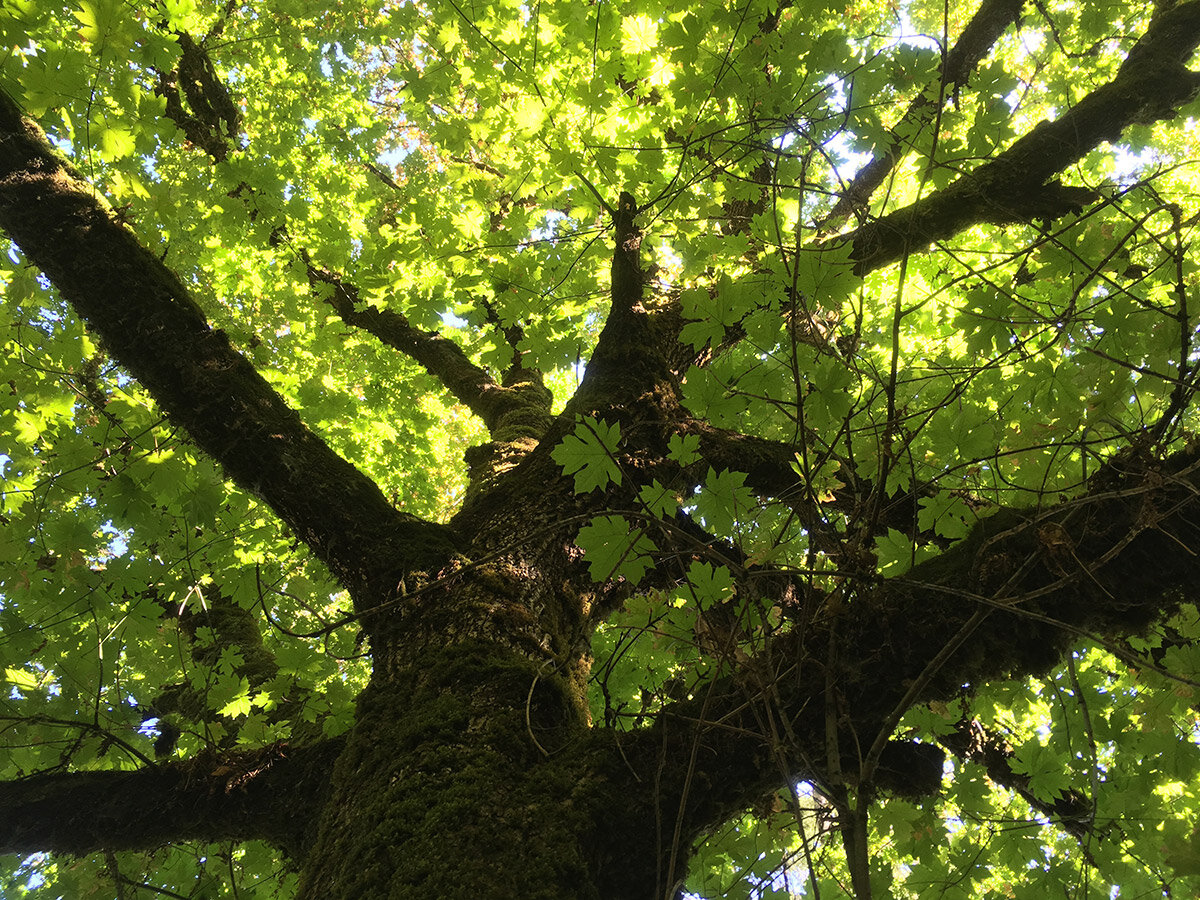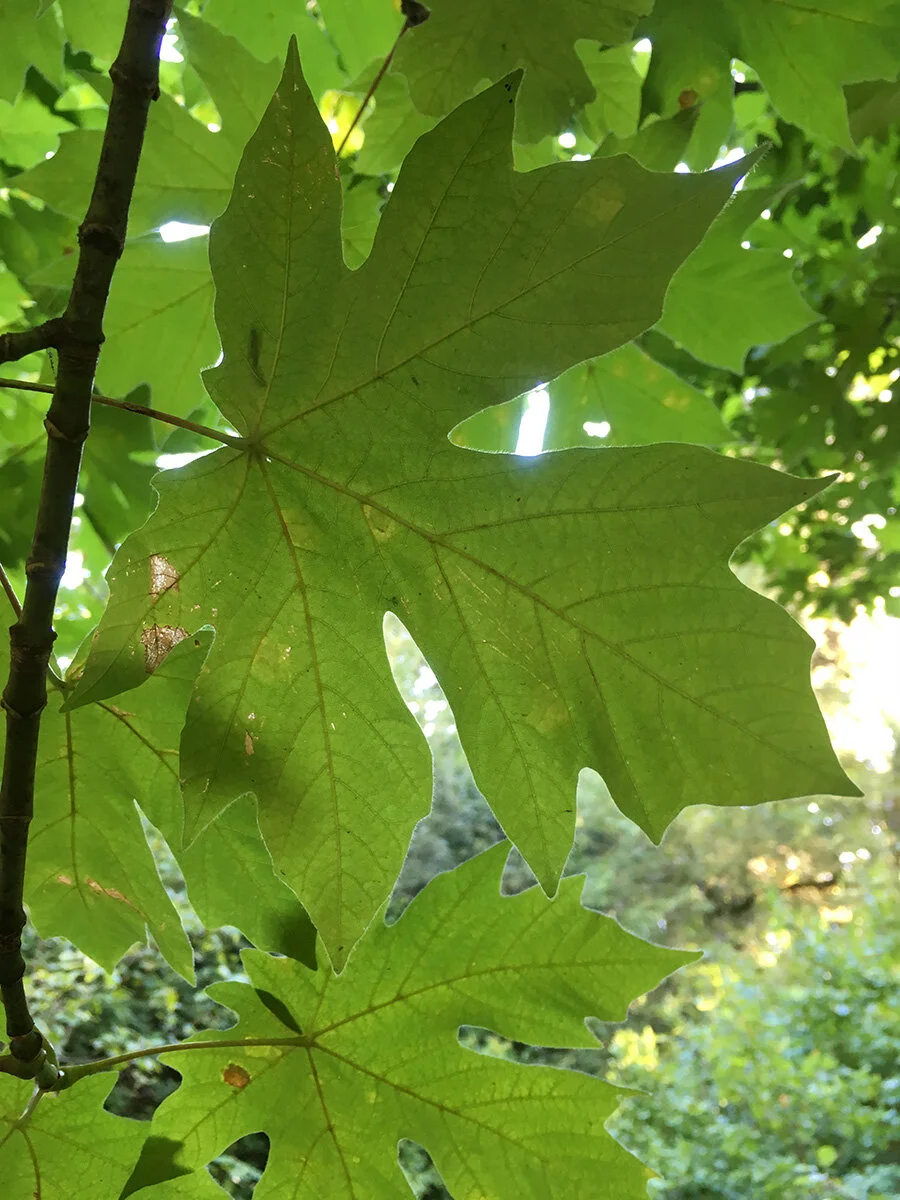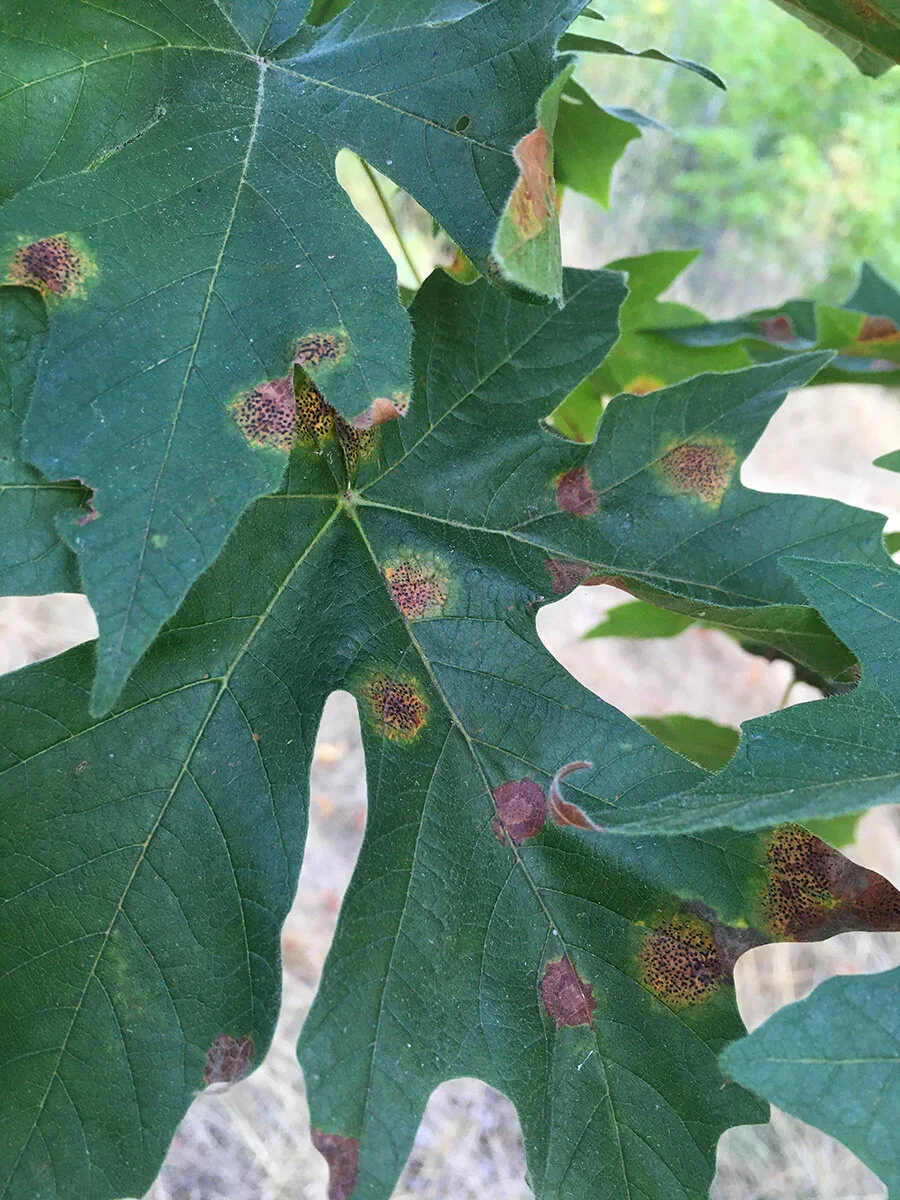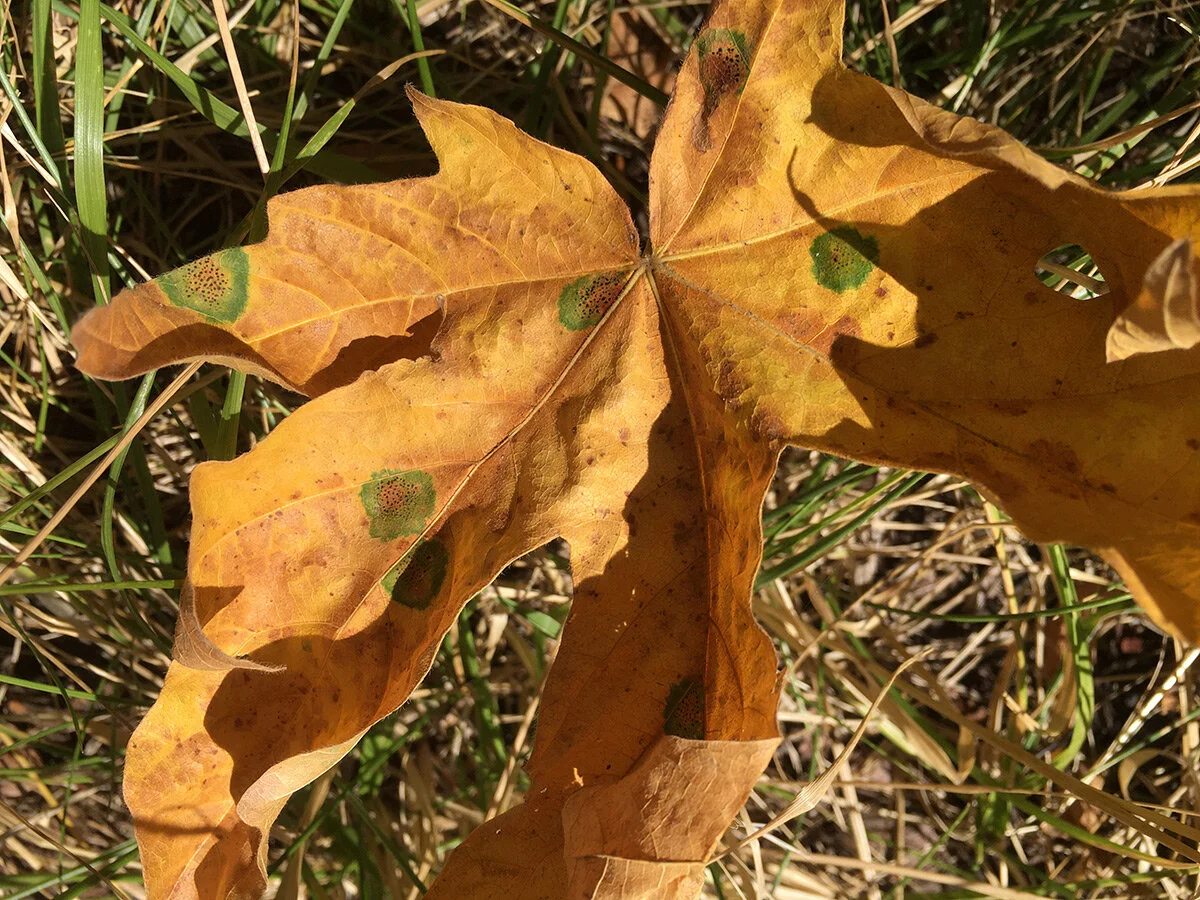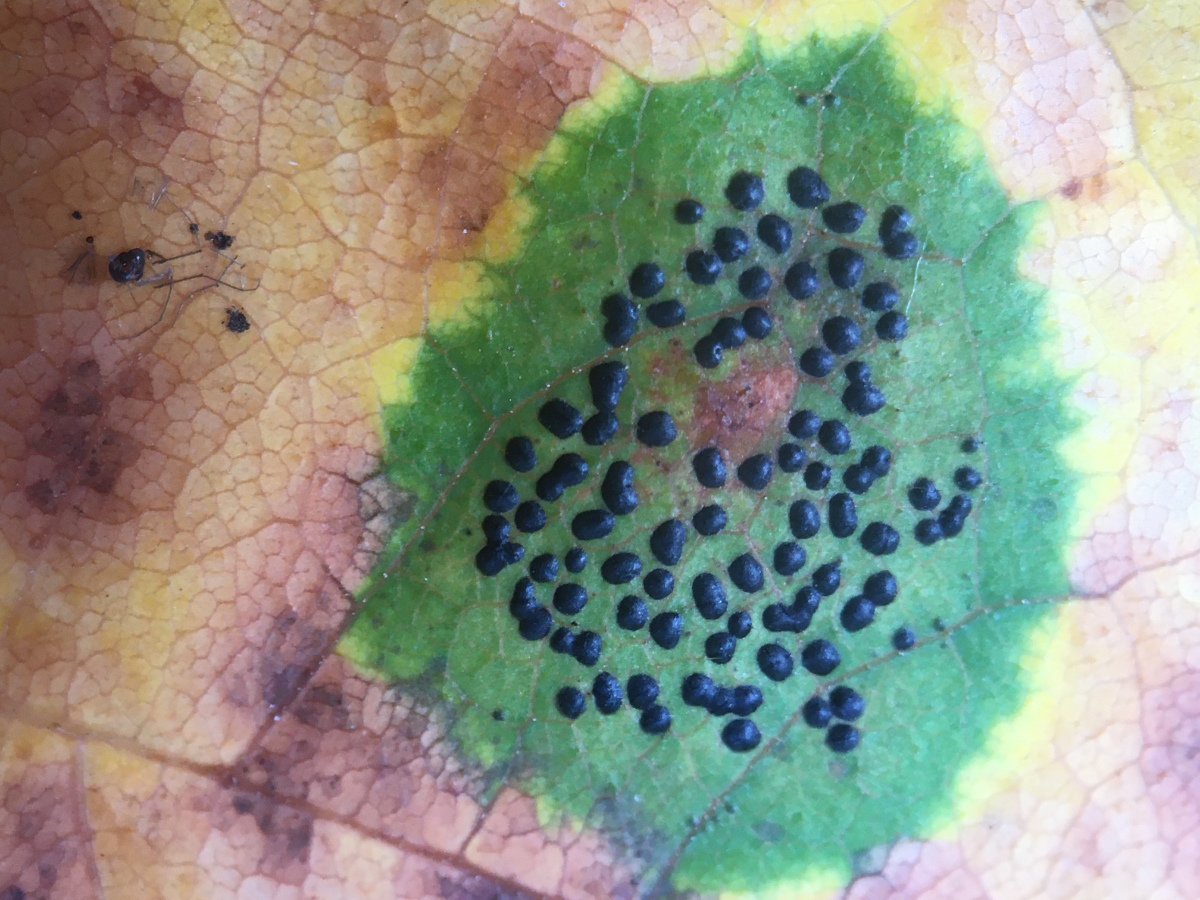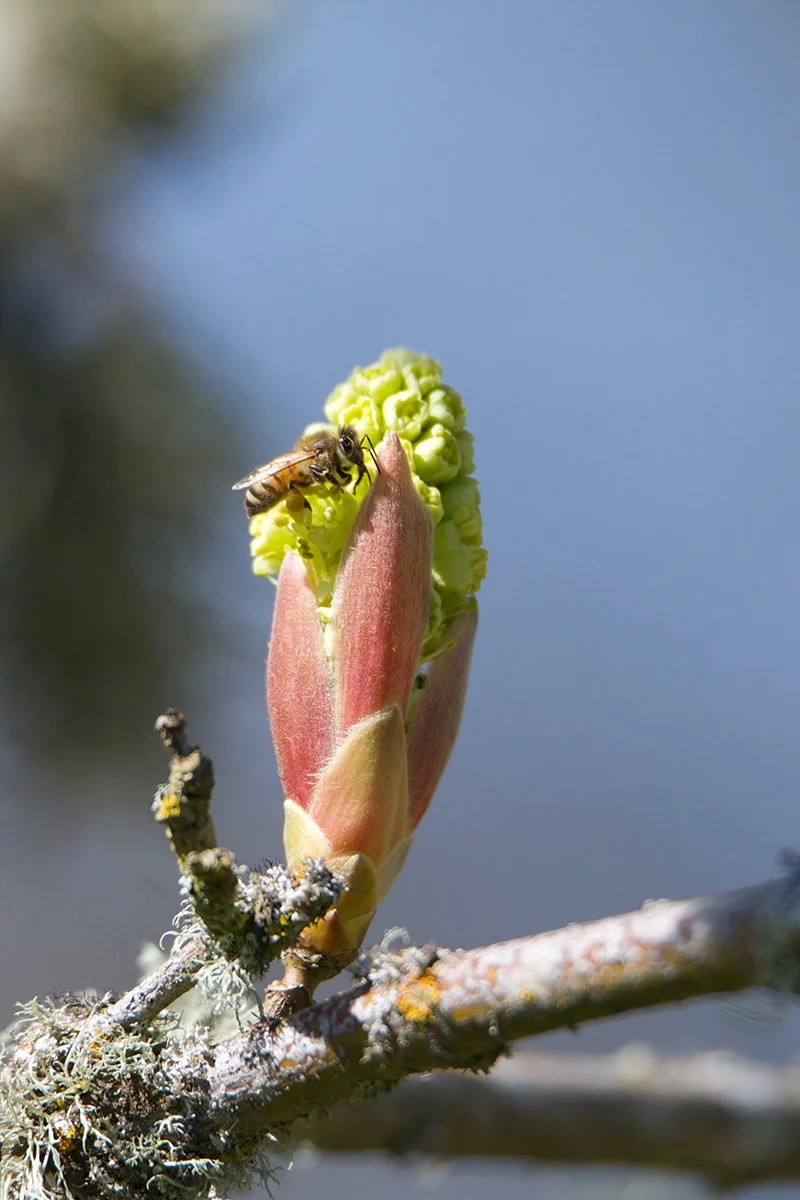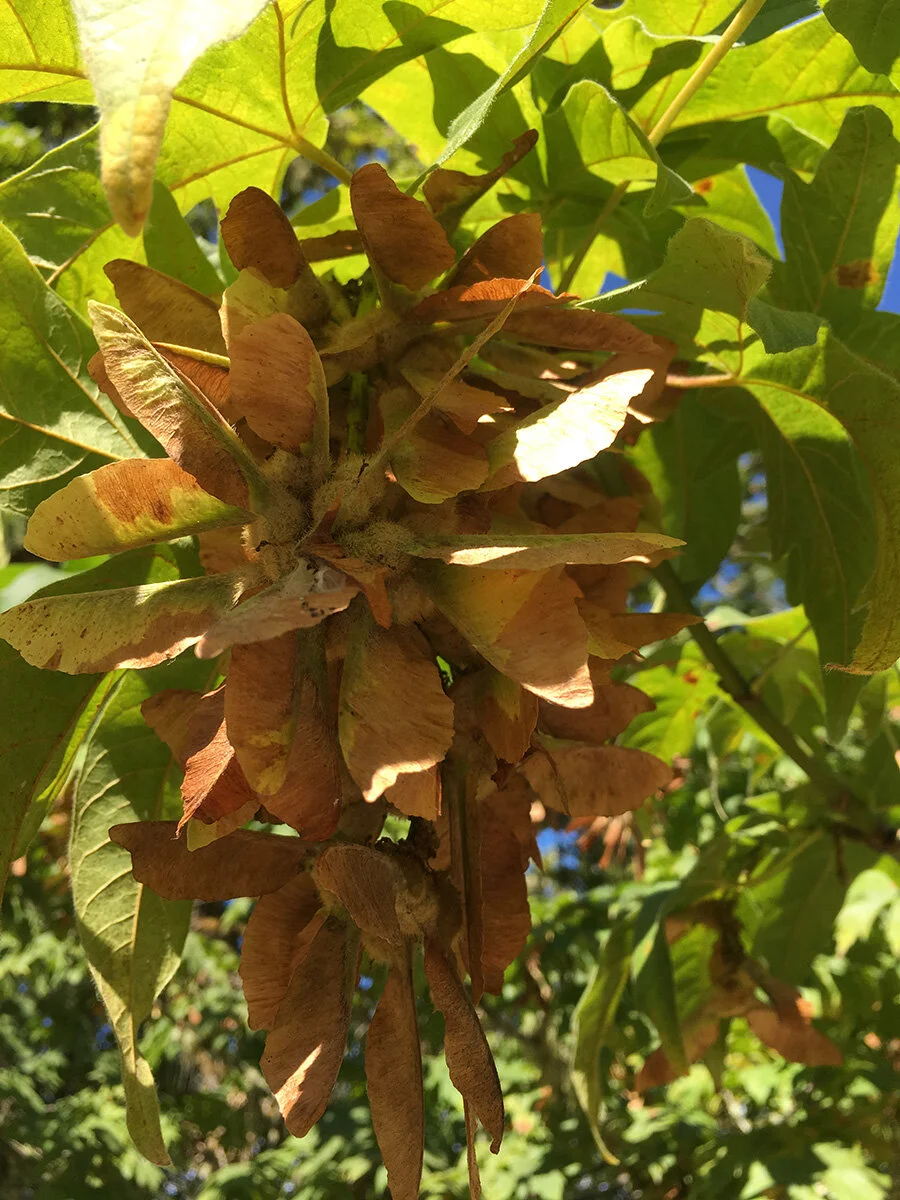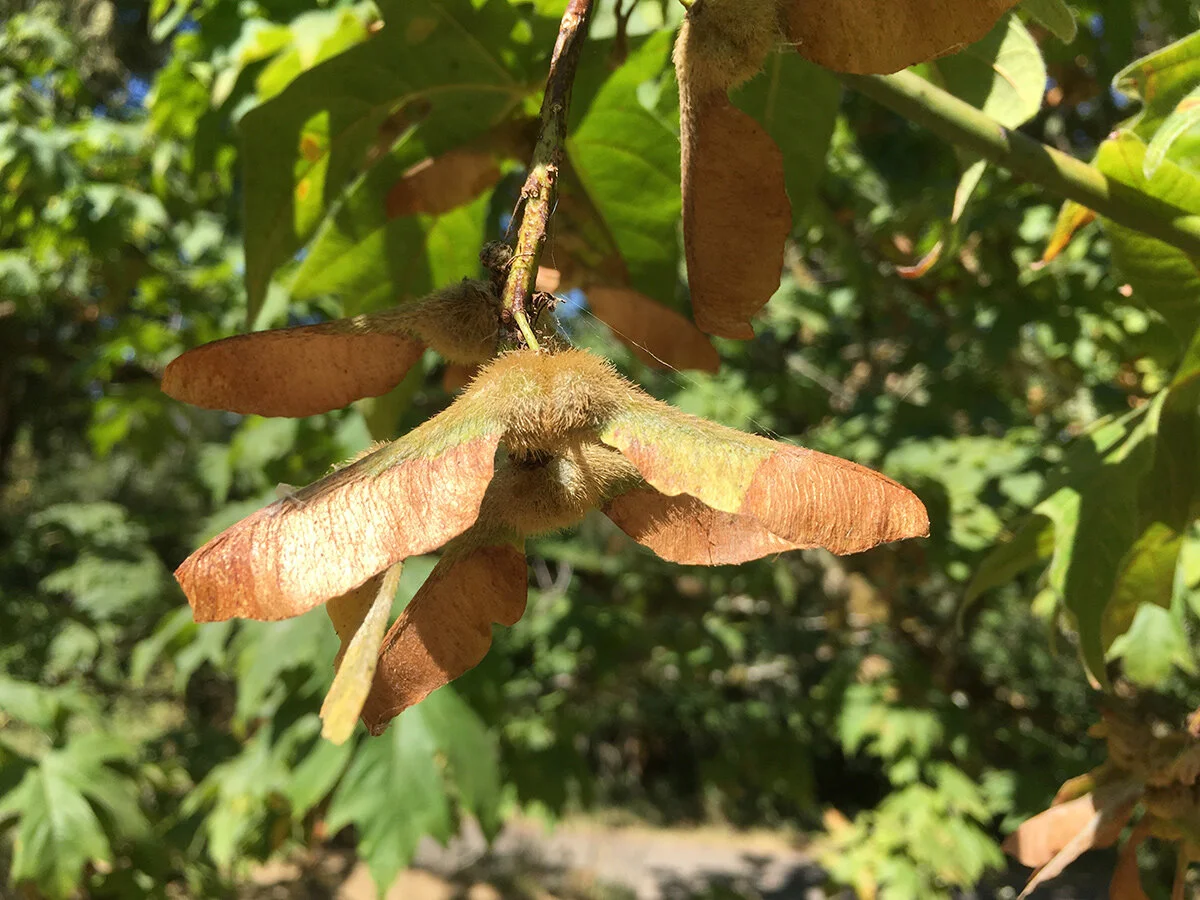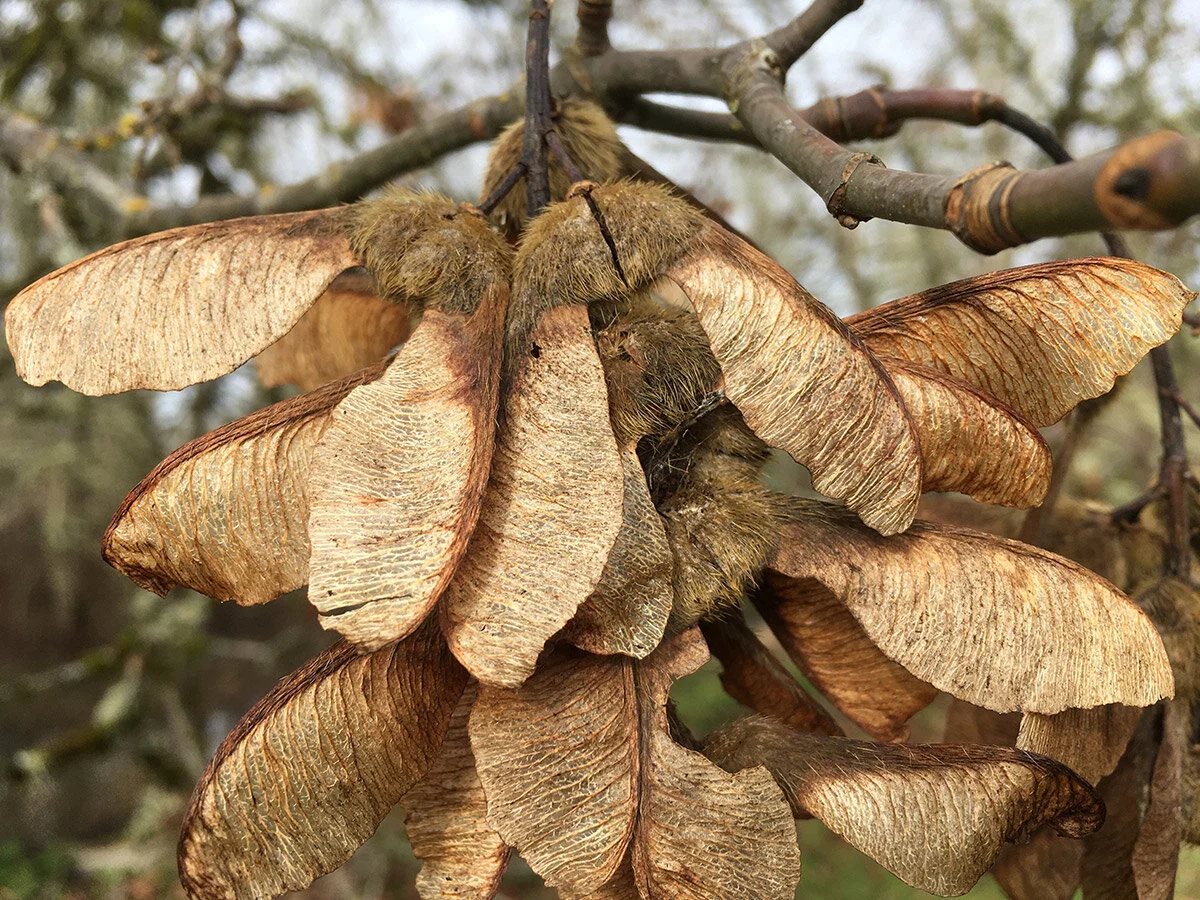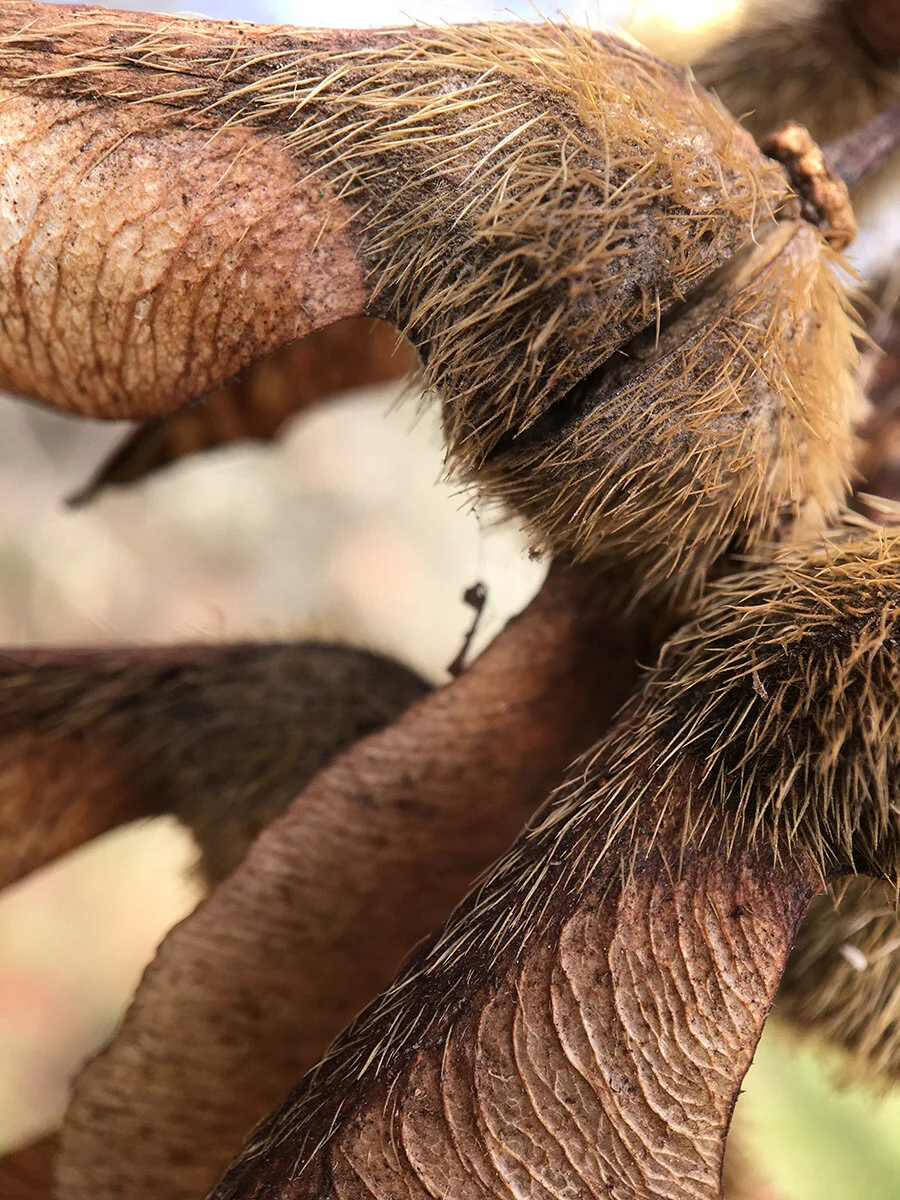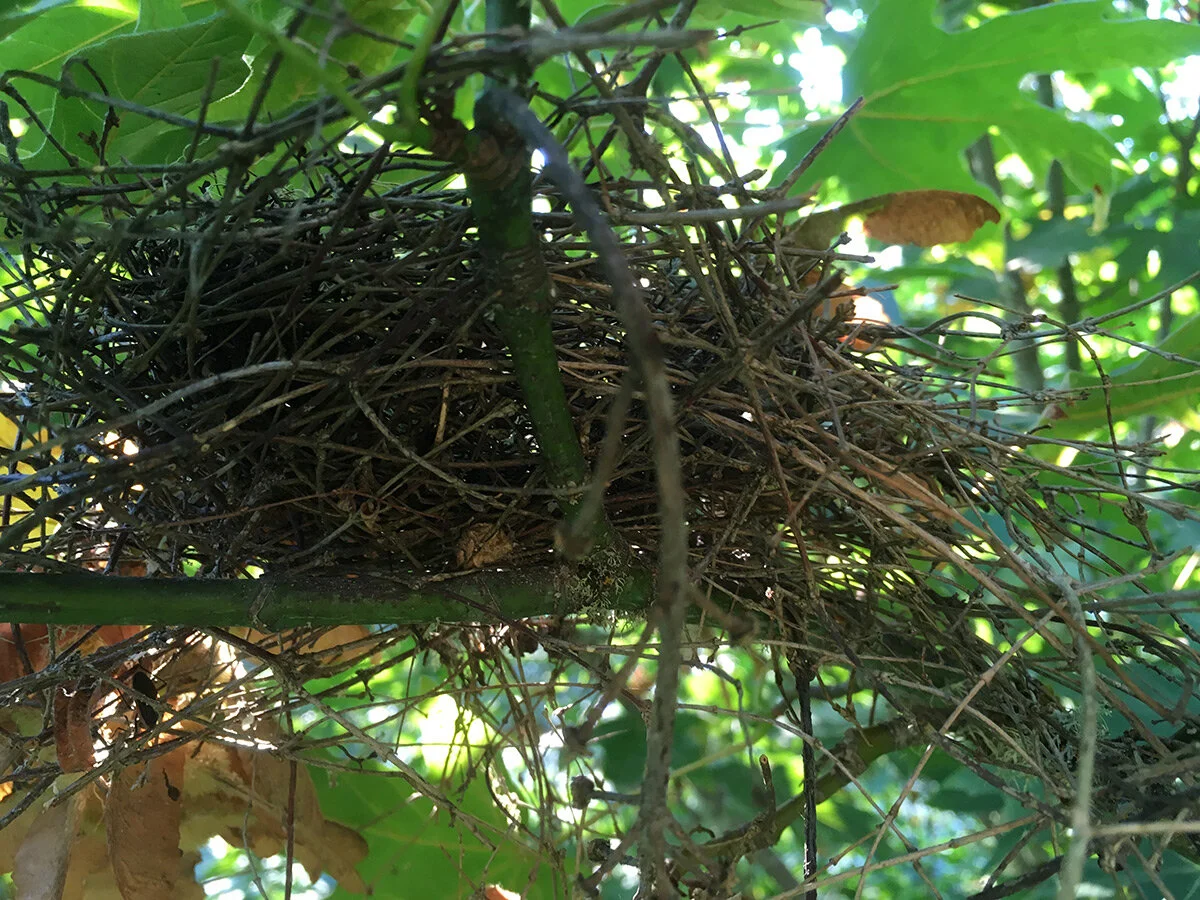Bigleaf Maple (Acer macrophyllum), Maple Family (Aceraceae)
Leaves
When you come across this tree you immediately awed at the enormity of its leaves. The leaves are opposite and usually 6” - 10” wide and long. It has 5 deep, long-pointed lobes ( sometimes 3). It has a long leaf stem that is attached to the base of the leaf on the underside. On the upper and lower side of the leaf the veins are easily seen radiating out into the leaf. The leaf is shiny dark green above and a paler green below. It is slightly hairy on the underside.
Tar Spot Leaf Fungus
As I sat there looking at all the leaves on the ground, I noticed many of the leaves had green spots that looked like a droplet of watercolor pigment had fallen on their papery surface. Inside these blotches were black, raised dots which are the spore-bearing tissue of a tar spot fungus. The fungi will overwinter on the fallen leaves. With the splashing rain and wind of spring, the spores are carried back up into the tree where the life cycle begins again on new, sprouting leaves.
Interestingly, as the fungus forms on the leaves during the spring and summer, it is brown and yellow around the black dots as if it is sucking the life out of the leaf. In the fall, it seems to reverse course by creating an island of green around itself, perhaps to keep the leaf alive a little longer as it completes its life cycle.
Buds
In winter, the buds look like a crimson crown adorning the top of a forest spirit’s staff. As spring approaches, the buds will swell to a considerable size.
Bark
The young bark of this tree is green and mostly smooth. The tree or shoots off the bottom of the tree can stay green for quite a few years from what I see out at the arboretum. The bark eventually turns grey-brown and becomes ridged.
Flowers
Bigleaf maple has small yellow-green flowers in clusters that will hang like pendants as they emerge. These flowers are a great nectar and pollen source for insects.
Fruit
Seeds in Spring
The wings of the maple seeds start to form and emerge from the flowers fairly soon after pollination.
Seeds in Summer
There are two seeds connected to form a double samara. Each seed with the wing is about 1” - 1.5” long. The wings turn brown and the seed part have yellowish hairs. You’ll see them grow in these dense clusters. I love watching the seeds fall and whirl through the air. They can fly surprisingly far from the tree with help from a little breeze.
Seeds in Winter
As I wandered around the arboretum in winter, I noticed that some of the Big Leaf Maple trees still had many clusters of seed samaras or keys. The wings are a golden paper. The seed is enclosed in a protective shell that has a fuzzy husk. I’ll be waiting to see when they decide to take flight and land in an opportune spot for germinating.
Bird Nests
I heard this Black-headed Grosbeak singing and saw that it was sitting on its nest. I usually see these nests made from small sticks that are roughly the same size. The nest appears loosely constructed and most of the nests I have observed you can see light coming through as you look up through the bottom of the nest.
Life in a Bigleaf Maple
Red-breasted Sapsucker
I saw a red-breasted sapsucker about 5 minutes before I came across this Bigleaf maple. They make rows of these little holes to tap into the inner bark, and then they drink the sap that flows from them.
In front of a house where I used to live a sapsucker made holes in a couple of maple trees. When the sap started to flow I would see hummingbirds and squirrels stop by to drink the sap. I also saw a flicker hopping around on the tree trunk investigating the holes and noticed that some ants had been drawn to the sap and the flicker was eating some of them.
Eastern Fox Squirrel
The maple seeds stay on the trees during the winter. At the beginning of January, I watched this squirrel peel off the outer husk of the seeds and eat them. To read more, click on the link below.
Western Gray Squirrel
These squirrels will peal off small strips and eat the inner bark. To read more, click on the link below.
Goldenrod Crab Spider
This well-camouflaged spider can be seen on the flower clusters waiting to ambush its unsuspecting prey. To read more, click on the link below.
Licorice Ferns
These ferns grow in thick carpets of moss that cover limbs and trunks of maple trees. To read more, click on the links below.
Blog post 09/30/20
Blog post 09/21/21 - Nice photo of fern sprouting after summer rain.
References
National Audubon Society Field Guide to North American Trees - Western Region, Knopf, 1998.
Trees to Know in Oregon, Oregon State University Extension Service, Revised April 2005.
Oregon State University - Oregon Wood Innovation Center - Bigleaf Maple (website).
Quick Reference:
Height: 30 - 70’
Leaves: Opposite, 6” - 10” long & wide, 5 deep, long pointed lobes (occ. 3)
Fruit: 1” - 1.5” long;
paired long-winged keys
Habitat: Along streams and moist, well-drained soils of the foothills
Photo Location:
Mt. Pisgah Arboretum
Mt. Pisgah Arboretum Plant List
Eugene, OR

